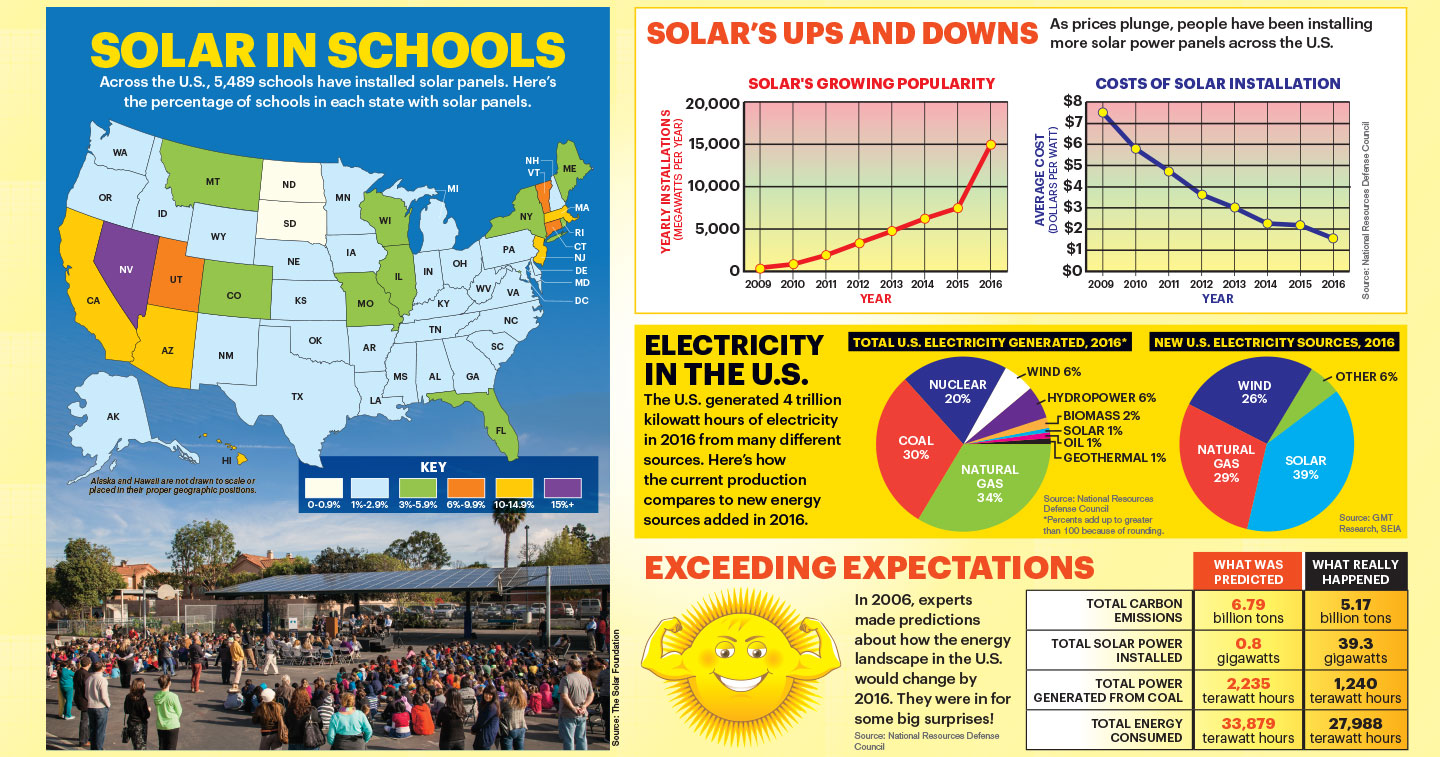When seventh-grader Claire Vlases first proposed putting solar panels on the roof of her school, people were skeptical. “It seemed like a wild idea,” she says. Solar panels capture energy from the sun’s rays and turn it into electricity. Two years later, Sacajawea Middle School in Bozeman, Montana, is one of more than 5,000 schools in the U.S. running on solar energy.
It’s not just schools that are going solar. People are turning to solar panels to power homes, businesses, and more. As a result, solar technology is now the fastest growing energy source in the world.


